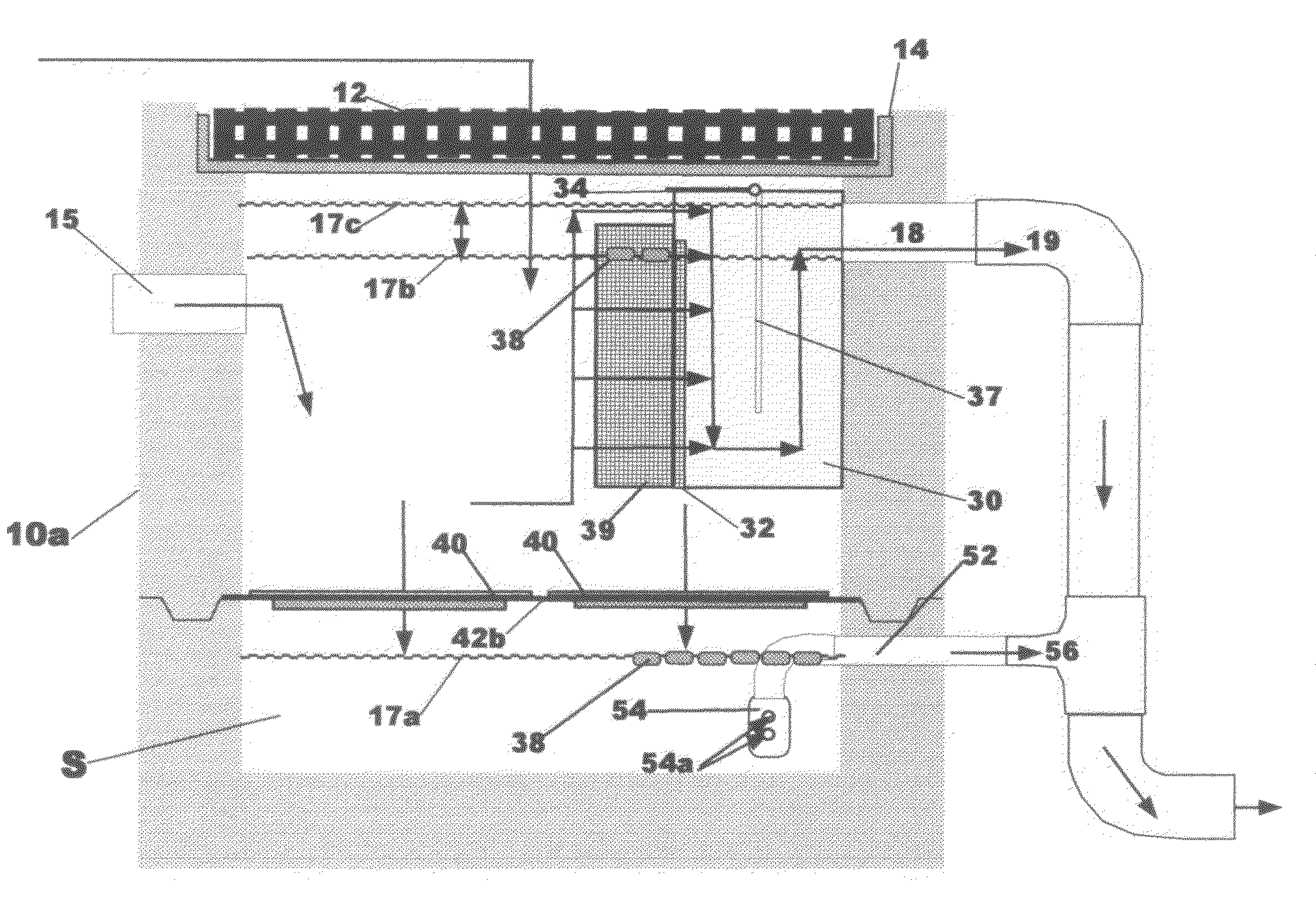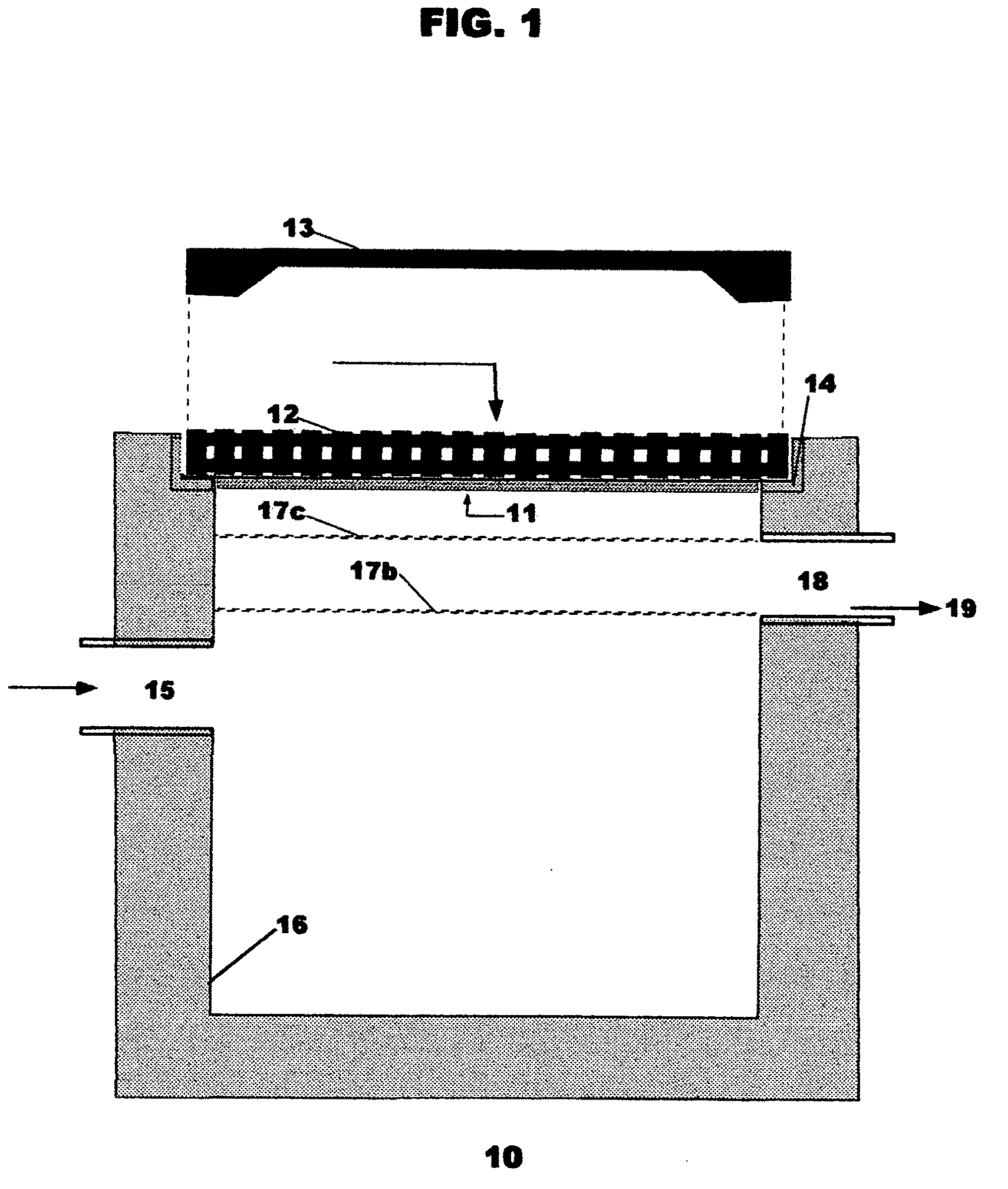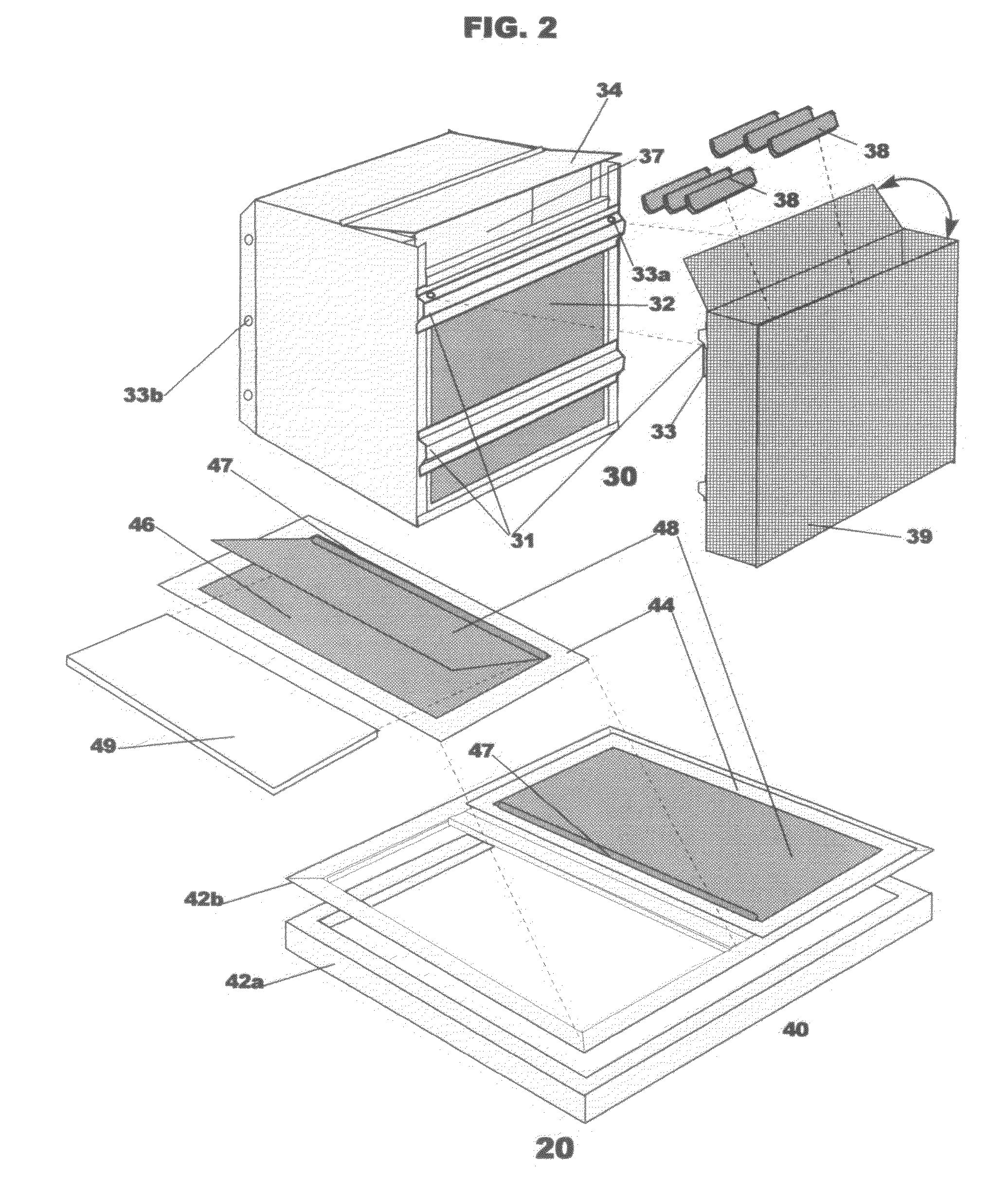Watershed runoff treatment device & method
a runoff treatment and runoff technology, applied in the direction of moving filter element filters, filtration separation, separation processes, etc., can solve the problems of limiting the use of the most efficient hydraulic drain inlet insert device, requiring more complex equipment and expensive equipment, and not only more expensive providing these capabilities
- Summary
- Abstract
- Description
- Claims
- Application Information
AI Technical Summary
Benefits of technology
Problems solved by technology
Method used
Image
Examples
second embodiment
[0023]FIG. 5 is an elevation view of the device of FIG. 2 installed in the vault of FIG. 1
third embodiment
[0024]FIG. 6 is an elevation view of the device of FIG. 2 installed in the vault of FIG. 1.
DETAILED DESCRIPTION OF SOME ILLUSTRATIVE EMBODIMENTS
[0025]FIG. 1 discloses the top / side-entry, high-side-exit, concrete drain inlet vault 10 of a type in which the embodiments of this invention can typically be utilized. This type of drain inlet vault 10 consists typically, but not exclusively, of a concrete square or rectangular shaped box 16 with the open top 11 surrounded by steel angular support elements 14 which position and support grated lid(s) 12 or solid cover(s) 13. The vault 10 may have a top-entry grate 12 through which storm water runoff from the surrounding watershed enters the inlet vault 10, or it may have side-entry port(s) 15, or both. Water can enter the box 16 through the open top 11 or through pipe(s) 15 penetrating the sidewall(s) of box 16. Water can exit the box 16 through pipe(s) 18 located as high as possible in a sidewall of box 16 and become discharge 19. The water...
PUM
| Property | Measurement | Unit |
|---|---|---|
| Time | aaaaa | aaaaa |
| Pressure | aaaaa | aaaaa |
| Flow rate | aaaaa | aaaaa |
Abstract
Description
Claims
Application Information
 Login to View More
Login to View More - R&D
- Intellectual Property
- Life Sciences
- Materials
- Tech Scout
- Unparalleled Data Quality
- Higher Quality Content
- 60% Fewer Hallucinations
Browse by: Latest US Patents, China's latest patents, Technical Efficacy Thesaurus, Application Domain, Technology Topic, Popular Technical Reports.
© 2025 PatSnap. All rights reserved.Legal|Privacy policy|Modern Slavery Act Transparency Statement|Sitemap|About US| Contact US: help@patsnap.com



